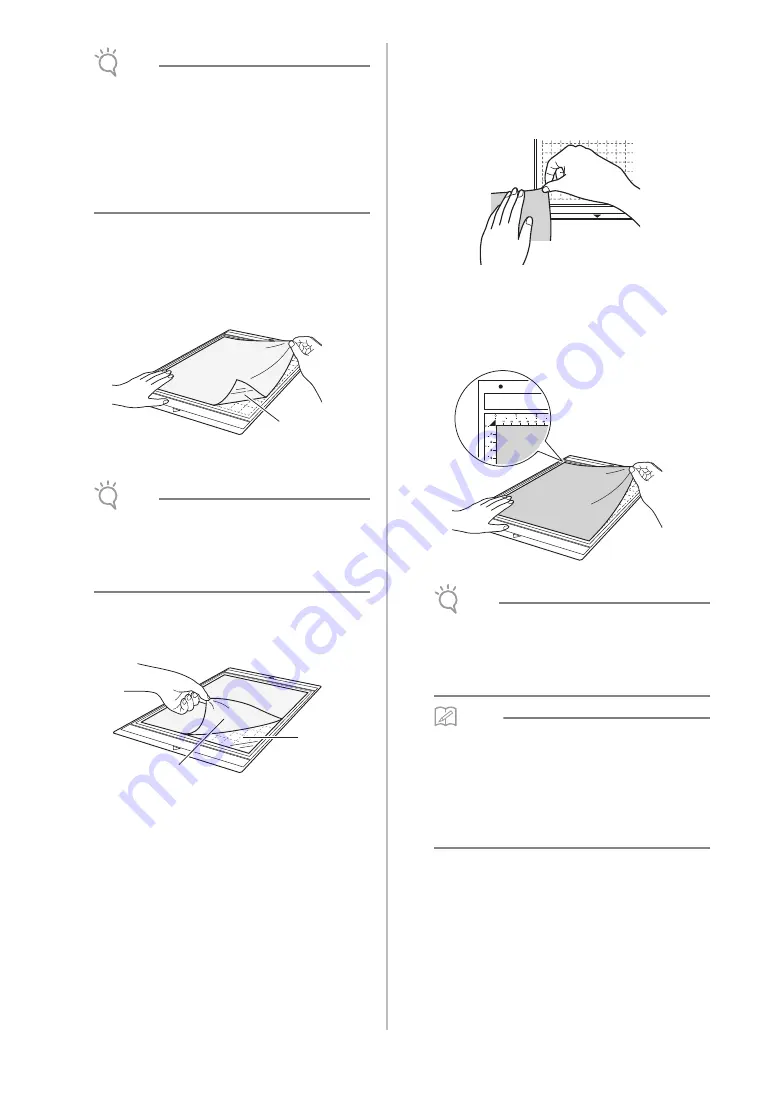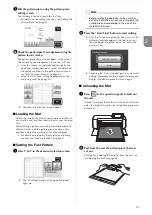
22
Note
•
Do not discard the protective sheet peeled off
the mat; save it for later use.
•
In order to maintain the adhesive strength,
attach the protective sheet to the adhesive side
of the mat after use.
•
When the mat is not being used, clean the
adhesive side and affix the protective sheet
before storing it. For details, see “Cleaning the
Mat” on page 78.
b
With the glossy side of the high tack adhesive
fabric support sheet facing down, attach it to
the mat’s adhesive side.
Slowly attach the support sheet from its edges so that
no air is trapped between the mat and the sheet.
a
Glossy side of support sheet
Note
•
Place the support sheet within the attaching
area (grid area) on the adhesive side of the mat.
If the sheet extends from the attaching area, it
may be damaged by the feed rollers when the
mat is fed.
c
Peel off the backing from the top of the support
sheet.
a
Backing
b
Adhesive
d
Test attaching the material.
Before attaching the material to the mat, use a corner
of the adhesive side of the mat to test attaching it. If
any problems occur when testing attaching, use
different material.
e
From its edges, attach the material to the
adhesive side of the mat so that there are no
wrinkles in the material.
Be sure to first iron the fabric to remove any wrinkles.
Note
• Place the material within the attaching area
(grid area) on the adhesive side. If the material
extends from the attaching area, it may be
damaged by the feed rollers when the mat is
fed.
Memo
• The mat does not have a top and bottom. It can
be inserted into the feed slot from either end.
• Be sure that the vertical grain of the attached
fabric runs straight up and down. The built-in
patterns are automatically arranged suitable for
fabric with vertical grain.
• When drawing a seam allowance, attach the
fabric to the mat with its wrong side facing up.
a
a
b
















































